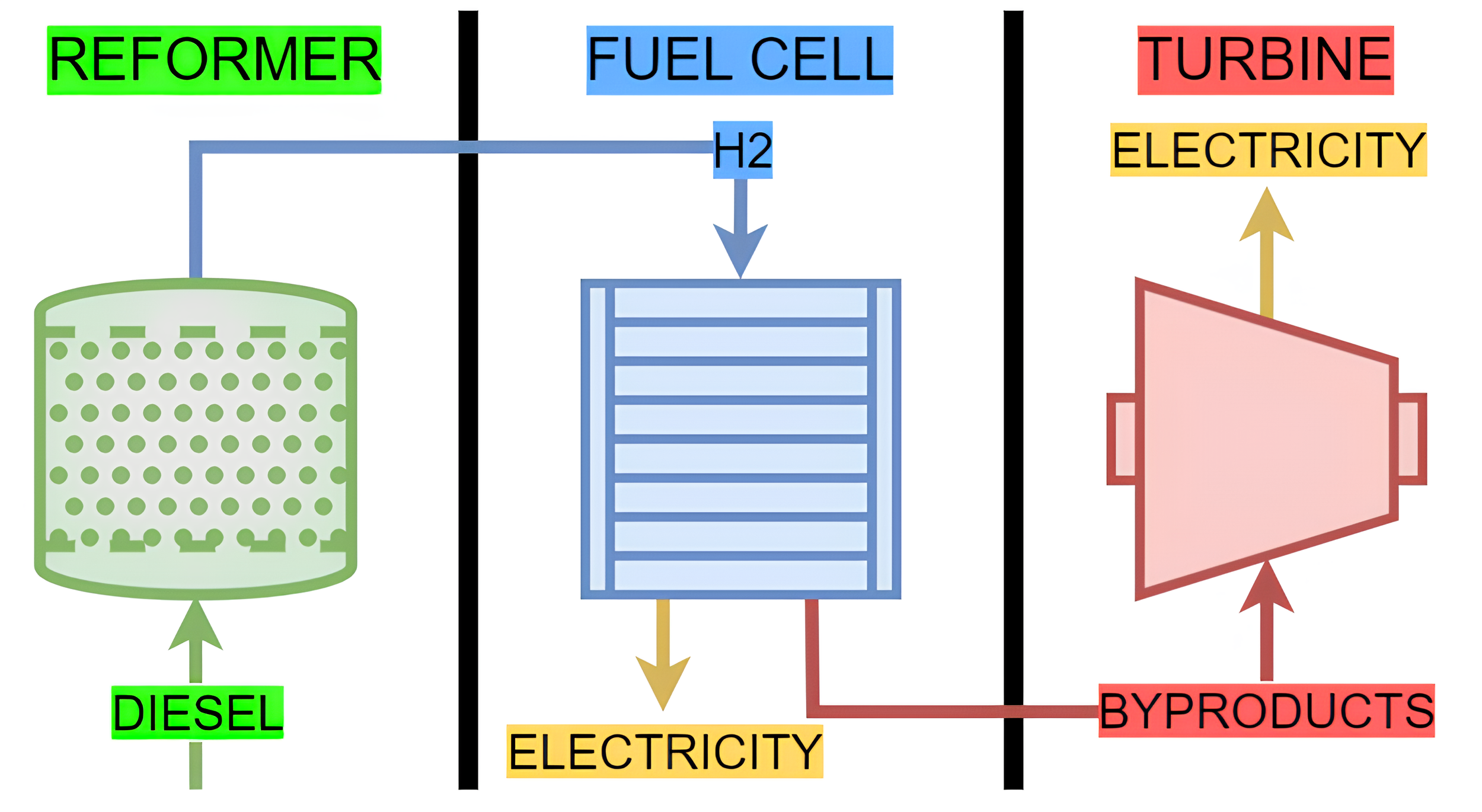
Diesel Fuel Cells For The Future
Railroads Problems at Hand
-
Railroads Fuel Spending
In 2023 alone, North American Class 1 Railroads spent almost $13 Billion on fuel costs alone.
With their diesel fleet's %30 fuel efficiency, they spent $9.1 Billion on fuel that did not provide revenue, and was wasted as friction or emissions.
-
Emissions
In 2022 Union Pacific spent $1 Billion on modernizing their fleet to meet ever stricter emissions standards.
And in 2025 the California Air Resources Board are set to release a Tier 5 emissions proposal, which could eliminate the viability of diesel engines for Class 1 Railroads fleets.
-
Hydrogen Woes
As Class 1 Railroads look to Hydrogen for the future of their fleets, Hydrogen brings with it some serious concerns.
Including but not limited to, safety concerns revolving around Hydrogen gas, lack of infrastructure coupled with high capital costs to develop said infrastructure, and is not naturally occurring, and is exceedingly expensive to produce.
The Problems We Solve
-
Fuel Spending
By utilizing the high inherit system efficiency of fuel cells, we can reduce the total cost of ownership for Class 1 railroads significantly.
-
Safety
Using diesel as its fuel source, there are no new fuel safety concerns, unlike Hydrogen gas and it's inherit safety issues.
-
Fuel & Infrastructure
By utilizing diesel fuel, and it's existing infrastructure, we negate the need for railroads to develop and build new infrastructure.
Our Solution
Our solution has 3 primary parts
The Reformer
The Reformer module allows us to utilize existing fossil fuels, a fuel source 3X cheaper than Hydrogen gas.
Solid-Oxide Fuel Cell
By utilizing a Solid-Oxide Fuel Cell, we can gain significant operating efficiencies, and symbiotic heat transfer with the Reformer.
Turbine Energy Recovery
By utilizing a gas turbine, we can recover any byproducts and waste heat from the first 2 stages, further increasing system efficiency.

